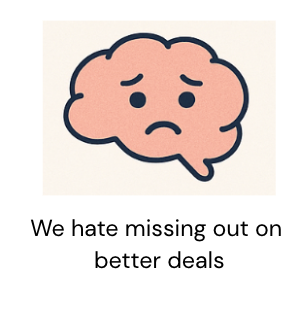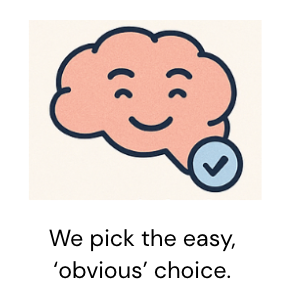Have you ever gone into a store for one thing but left with something more expensive —feeling proud you got a “smart deal”?
That’s exactly what happened to Anna.
She went to buy her usual $40 perfume.
But when she saw three options— a small bottle for $40, a medium for $65, and a large for $70 — she picked the large. Just $5 more than the medium? Bargain!
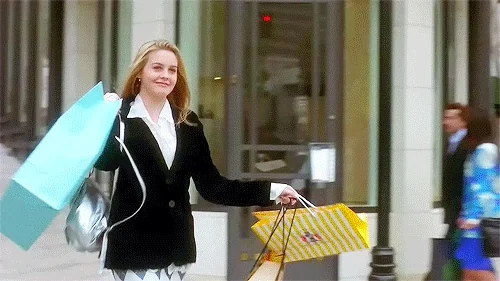
Except — it wasn't a coincidence.
Her choice was shaped by a sneaky marketing trick called the decoy effect.
Avoid falling for it the next time you shop.
What is the Decoy Effect?
The decoy effect is a pricing strategy where one option is added — not meant to be chosen — but to make another option look much better.
Marketers use this strategy by setting up three roles:
Target: the option they want you to pick
Competitor: the alternative that competes with the target
Decoy: the option that exists only to make the target look better
Let's go back to Anna's perfume:
Large: $70 (target)
Small: $40 (competitor)
Medium: $65 (decoy)
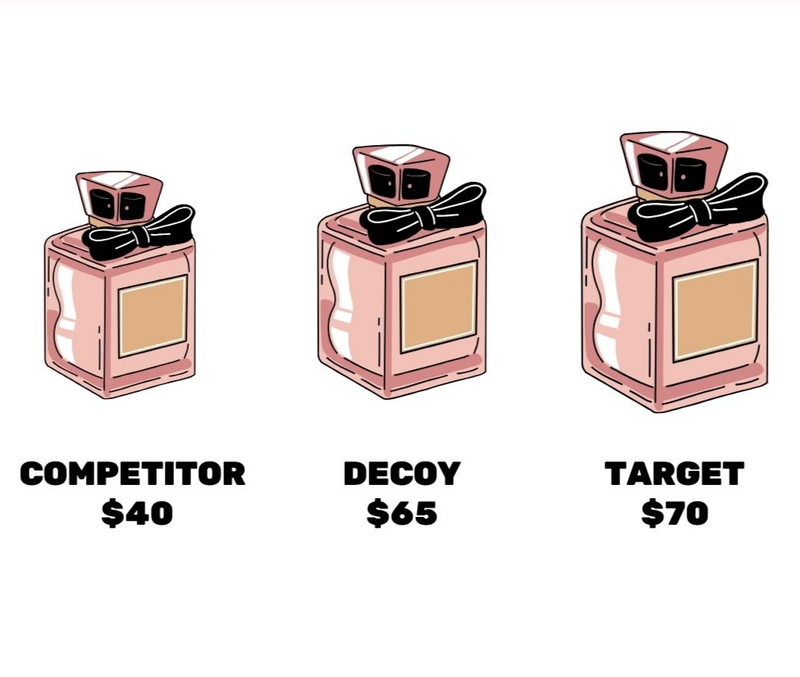 Image created by author via Canva
Image created by author via Canva
The medium option exists to make the large seem like a “no-brainer.” Without it, Anna might have just bought the small bottle.
But why does this trick work so well? 🤔
The decoy effect works because of the way your brain makes decisions.
How the Decoy Effect Works
You compare options instead of judging them alone.
Your brain naturally focuses on comparisons that look like the best deal.
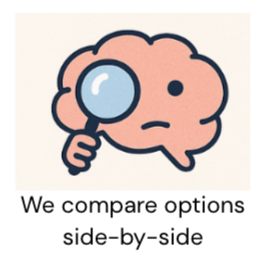
Example:
Cinema snacks:
Small popcorn: $5
Medium popcorn: $7.50 (decoy)
Large popcorn: $8
Without the medium, you’d compare small vs. large and maybe pick small. But the decoy shifts your focus to “large vs. medium” — only 50¢ more for a lot more popcorn! Large feels like the smart choice.
You try to avoid losing value.
The pain of missing a deal feels stronger than the pain of spending extra money.
Example:
Seeing the medium popcorn so close in price to large makes you think, “Why lose all that extra popcorn for just 50¢ more?” Even if you don’t really want that much, the fear of missing out on value wins.
You take the easy choice.
When one option looks clearly better than the decoy, your brain stops debating and goes for it.
Example:
Seeing the medium popcorn makes large feel like the obvious upgrade. “Only 50¢ more? Done.”
Overcome the Decoy Effect
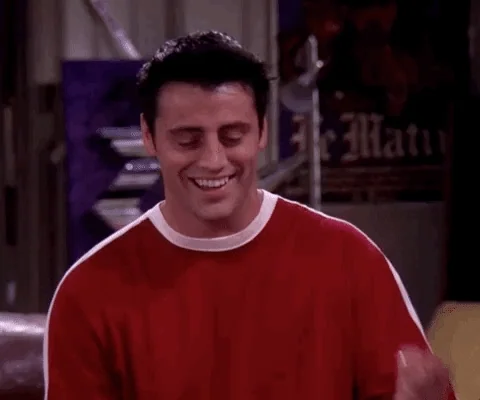
Now that you know this pricing strategy, you can make smarter choices:
Set your budget or priority first. Know your limit or what’s most valuable before looking at choices.
Compare only what matters to you. Ignore options meant to sway you. Focus on what fits your needs.
Question the "obvious" choice. Ask yourself, “Would I still pick this if the decoy wasn’t there?”
Watch out! Decoys often show up when you see three options — but sometimes there can be more. If one choice feels like it’s only there to make another look better, think twice.
Quiz: Help Sami Spot the Decoy
Sami just got her first paycheck and is excited to buy a new pair of headphones. She wants great sound, comfort, and a sleek look.

At the store, Sami sees these options:
Model A: $150 — good sound, comfortable fit, sleek design, no noise cancellation.
Model B: $230 — excellent sound, wireless, noise cancellation, but slightly heavy.
Model C: $250 — excellent sound, wireless, noise cancellation, comfortable, sleek with extra features like touch controls and longer battery life.
Sami had planned to spend around $150, but is now tempted to spend more.
Quiz
Can you help Sami spot the decoy?
Take Action
Don’t let clever pricing tricks fool you! With a little awareness and planning, you can shop confidently and avoid falling for the decoy effect.
 Take control of your buying decisions:
Take control of your buying decisions:
Your feedback matters to us.
This Byte helped me better understand the topic.

